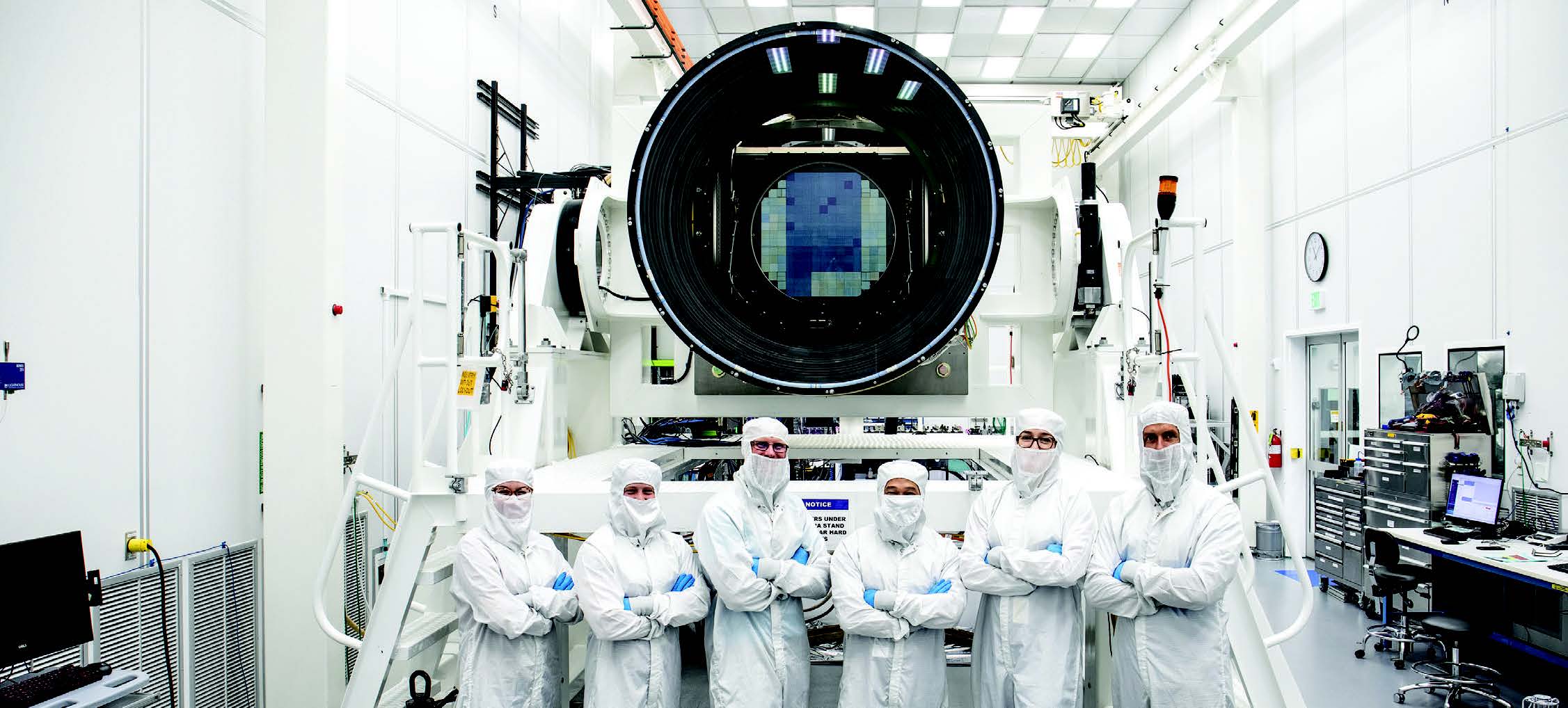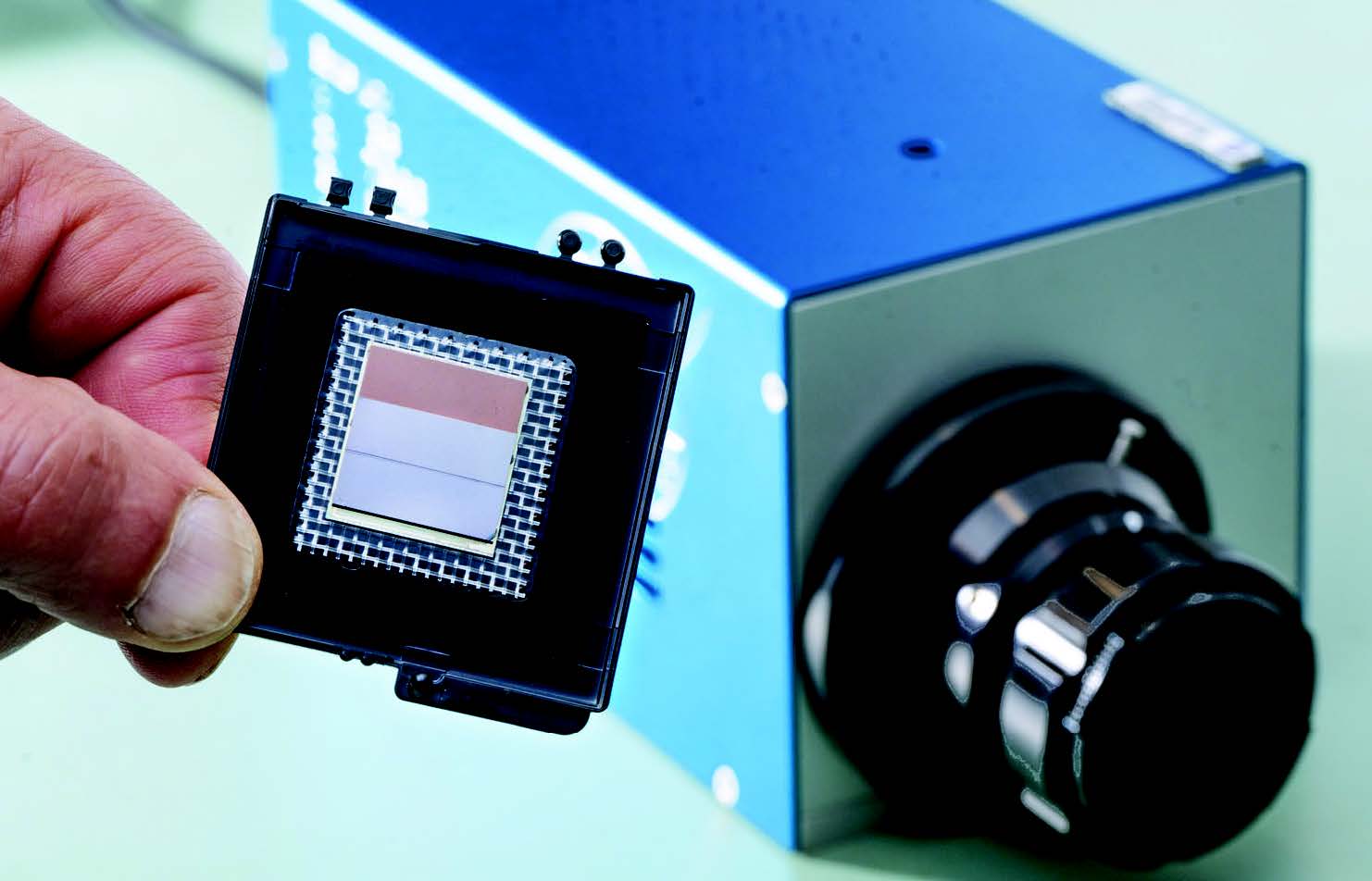Frozen Imaging: How Cryogenic Cameras Power Unprecedented Discovery
 The Legacy Survey of Space and Time (LSST) Camera in Chile and NASA’s Compact Thermal Imager (CTI) represent cutting-edge advancements in astronomical and Earth science technology. The LSST Camera, soon to be operational at the Vera C. Rubin Observatory, will survey the entire southern sky every three nights for a decade, producing detailed data to study dark matter, dark energy and transient astronomical events. In contrast, NASA’s multiple high-resolution infrared cameras and their sensors, already in operation, are designed for specific scientific and practical applications, from monitoring wildfires to studying planetary compositions. These cameras provide high-resolution imaging for wildfire detection and atmospheric studies from the International Space Station.
The Legacy Survey of Space and Time (LSST) Camera in Chile and NASA’s Compact Thermal Imager (CTI) represent cutting-edge advancements in astronomical and Earth science technology. The LSST Camera, soon to be operational at the Vera C. Rubin Observatory, will survey the entire southern sky every three nights for a decade, producing detailed data to study dark matter, dark energy and transient astronomical events. In contrast, NASA’s multiple high-resolution infrared cameras and their sensors, already in operation, are designed for specific scientific and practical applications, from monitoring wildfires to studying planetary compositions. These cameras provide high-resolution imaging for wildfire detection and atmospheric studies from the International Space Station.
The LSST Camera employs sophisticated cryogenic systems to cool its CCD sensors to very low temperatures, significantly reducing thermal noise and enhancing image quality. Similarly, NASA’s compact cameras use cryogenic technology to maintain their strained-layer superlattice sensors at optimal low temperatures, ensuring high-resolution and high-spectral range infrared imaging. Both categories of instruments exemplify the integration of advanced sensor technology and innovative design to enhance our understanding of the universe and our planet. Join us as we explore how these state-of-the-art cameras are pushing the boundaries of what we can observe and understand.
Part I: LSST Camera Peers Deep into the Cosmos
The Vera C. Rubin Observatory, perched on a mountaintop in Chile, is set to revolutionize our understanding of the universe with its ambitious Legacy Survey of Space and Time (LSST). Over the course of a decade, this international scientific endeavor will map the southern hemisphere sky in unparalleled detail, aiming to answer some of the most pressing questions in cosmology. Central to this project is the LSST Camera, the largest digital camera ever built for astronomy, created at SLAC National Accelerator Laboratory.
This 3,200-megapixel marvel will capture the entire southern sky every three nights, providing invaluable data to explore the elusive nature of dark matter and dark energy, study galaxy formation and evolution, catalog asteroids and observe the dynamic night sky. The camera’s sophisticated components include the world’s largest lens for astronomy, an array of specialized filters and a state-of-the-art cryostat to maintain optimal operating temperatures for the charge-coupled device (CCD) sensor, a type of image sensor used in cameras, including astronomical cameras like the LSST Camera. It converts light into electrical signals, which can then be processed to create digital images. Once operational, the LSST Camera will gather images at a rate of three per minute, contributing to a vast repository of data that will significantly enhance our understanding of the cosmos.
Cryogenics plays a crucial role in the LSST Camera’s design and functionality. According to Martin Nordby, the LSST Camera project manager, “The LSST Camera includes two separate cooling systems to cool the CCD sensors and electronics inside our cryostat.” He elaborates that the front-end analog-to-digital electronics and circuit boards are cooled to -40° C by a two-stage cascade refrigeration system developed by inTest Thermonics, a division of inTest Corporation. Brian Qiu, LSST camera process engineer, adds, “The second system cools the CCD sensors and their support structure to -130 ° C using an auto-cascade refrigeration system with a custom mix of refrigerant.” This ensures there are no cold spots or condensation that could affect telescope operations or image quality.
Implementing the cryogenic system for the LSST Camera posed several challenges. Qiu notes, “Challenges included understanding issues around oil propagation and freezing in the system, water ingress and hose material choice, and impacts of contaminants on such a distributed system.” To address these, the team developed a full-scale prototype system and two complete test units to prove the design and operations, better characterizing system behavior in real-world conditions.
The cryogenic system is essential for maintaining the optimal operating temperature for the CCD sensors within the LSST Camera. Nordby emphasizes, “The cryogenic system is critical in cooling the CCD sensors and removing both process and radiative heat loads.” This cooling is necessary to reduce noise and dark current, which could otherwise impact the ability to record faint light from distant sources. The system operates stably, ensuring consistent sensor performance.
Several innovative features and technologies were incorporated into the LSST Camera’s cryogenic system to enhance its performance and efficiency. “The -130° C system uses a ten-component nontoxic and nonflammable refrigeration mix, developed for our system by MMR Technologies, achieving a coefficient of performance (COP) of 11%, which is outstanding for a cryogenic refrigeration system,” Qiu highlights.
Ensuring the reliability and longevity of the cryogenic system, especially for the LSST Camera’s extended operational period, was a key focus. “We used high-quality components with proven operational pedigree, added considerable instrumentation to track trends in performance over time and developed empirical testing procedures,” Nordby explains. These procedures include flushing and moisture dry-out processes on the refrigeration transfer lines and a periodic replacement program for the filter dryers to improve long-term reliability.
Unexpected hurdles and breakthroughs were part of the development process for the cryogenic system. Qiu recounts that a significant hurdle was the bankruptcy of the refrigerant supplier. “We developed the methods for mixing and testing the ten-component refrigerant mix at SLAC to ensure a sufficient supply over the course of the LSST operation.”
The cryogenic system significantly impacts the overall data quality and accuracy of the LSST Camera's observations. According to Mr. Nordby, “The cooling systems are essential for stable operations, which are critical for avoiding systematic errors in the resulting images. Stable thermal environments ensure high-quality image data, vital for our ten-year survey.”
Collaboration and coordination among different teams and institutions were crucial in designing and implementing the cryogenic system. “The cryogenic systems were developed by a team at SLAC and commercial suppliers. The sensors, electronics, and support components inside the cryostat were designed and tested at Brookhaven National Laboratory,” Qiu shares. Close communication and face-to-face interactions were vital for successful integration.
Regarding future upgrades or improvements, Nordby mentions that the team doesn’t anticipate any upgrades from advances in cryogenic technology. “However, we have options for future system upgrades to support streamlined maintenance, although the current systems are operating well,” he adds.
“Cryogenic cooling systems are vital for the scientific potential of Rubin Observatory and the LSST Camera,” Nordby and Qiu conclude. “They enable the cooling and thermal stabilization of our custom CCD sensors and control electronics, maximizing the camera’s potential and supporting significant scientific advances in understanding our solar system, galaxy and universe.” www.lsst.org
Image: Researchers at SLAC National Accelerator Laboratory are nearly done with the LSST Camera, the world's largest digital camera ever built for astronomy. Roughly the size of a small car and weighing in at three tons, the camera features a five-foot-wide front lens and a 3,200 megapixel sensor that will be cooled to -100°C to reduce noise. Once installed atop the Vera C. Rubin Observatory's Simonyi Survey Telescope in Chile, the camera will survey the southern night sky for a decade, generating a wealth of data for scientists to analyze. This data will help unravel some of the universe's biggest mysteries, including the nature of dark energy and dark matter. Credit: Jacqueline Ramseyer Orrell/SLAC National Accelerator Laboratory
 Part II: NASA’s Compact Infrared Cameras Enable New Science
Part II: NASA’s Compact Infrared Cameras Enable New Science
by Karl B. Hille, NASA’s Goddard Space Flight Center, Greenbelt, MD.
A new, higher-resolution infrared camera outfitted with a variety of lightweight filters could probe sunlight reflected off Earth’s upper atmosphere and surface, improve forest fire warnings and reveal the molecular composition of other planets. The cameras use sensitive, high-resolution strained-layer superlattice sensors, initially developed at NASA’s Goddard Space Flight Center in Greenbelt, Maryland, using Internal Research and Development funding.
Their compact construction, low mass and adaptability enable engineers like Tilak Hewagama to adapt them to the needs of a variety of sciences. “Attaching filters directly to the detector eliminates the substantial mass of traditional lens and filter systems,” Hewagama says. “This allows a low-mass instrument with a compact focal plane which can now be chilled for infrared detection using smaller, more efficient coolers. Smaller satellites and missions can benefit from their resolution and accuracy.”
Goddard engineer Murzy Jhabvala holds the heart of his Compact Thermal Imager (CTI) camera technology – a high-resolution, high-spectral-range infrared sensor suitable for small satellites and missions to other solar system objects. Jhabvala led the initial sensor development at Goddard Space Flight Center, as well as leading today’s filter integration efforts. Jhabvala also led the CTI experiment on the International Space Station (ISS) that demonstrated how the new sensor technology could survive in space while proving a major success for Earth science. More than 15 million images captured in two infrared bands earned inventors, Jhabvala, and NASA Goddard colleagues Don Jennings and Compton Tucker an agency Invention of the Year award for 2021.
The CTI captured unusually severe fires in Australia from its perch on the ISS in 2019 and 2020. With its high resolution, it detected the shape and location of fire fronts and how far they were from settled areas – information critically important to first responders. Data from the test not only provided detailed information about wildfires, but also better understanding of the vertical structure of Earth’s clouds and atmosphere, and captured an updraft called a gravity wave caused by wind lifting off Earth’s land features.
The groundbreaking infrared sensors use layers of repeating molecular structures to interact with individual photons, or units of light. The sensors resolve more wavelengths of infrared at a higher resolution: 260 feet (80 meters) per pixel from orbit compared to 1,000 to 3,000 feet (375 to 1,000 meters) possible with current thermal cameras.
The success of these heat-measuring cameras has drawn investments from NASA’s Earth Science Technology Office (ESTO), Small Business Innovation and Research and other programs to further customize their reach and applications. For example, Jhabvala and NASA’s Advanced Land Imaging Thermal IR Sensor team are developing a six-band version for this year’s LiDAR, Hyperspectral, and Thermal Imager airborne project. “This first-of-its-kind camera will measure surface heat and enable pollution monitoring and fire observations at high frame rates,” Jhabvala explains.
Similarly, NASA Goddard Earth scientist Doug Morton leads an ESTO project developing a Compact Fire Imager (CFI) for wildfire detection and prediction. “We’re not going to see fewer fires, so we’re trying to understand how fires release energy over their life cycle,” Morton says. “This will help us better understand the new nature of fires in an increasingly flammable world.”
CFI will monitor both the hottest fires, which release more greenhouse gases, and cooler, smoldering coals and ashes that produce more carbon monoxide and airborne particles like smoke and ash. “Those are key ingredients when it comes to safety and understanding the greenhouse gases released by burning,” Morton explains.
After they test the fire imager on airborne campaigns, Morton’s team envisions outfitting a fleet of 10 small satellites to provide global information about fires with more images per day. Combined with next generation computer models, he adds that this information can help the forest service and other firefighting agencies prevent fires, improve safety for firefighters on the front lines and protect the life and property of those living in the path of fires.
“Outfitted with polarization filters, the sensor could measure how ice particles in Earth’s upper atmosphere clouds scatter and polarize light,” NASA Goddard Earth scientist Dong Wu adds. This application would complement NASA’s PACE – Plankton, Aerosol, Cloud, ocean Ecosystem — mission, which revealed its first light images earlier this month. Both measure the polarization of light wave’s orientation in relation to the direction of travel from different parts of the infrared spectrum.
“The PACE polarimeters monitor visible and shortwave-infrared light,” he explains. “The mission will focus on aerosol and ocean color sciences from daytime observations. At mid- and long-infrared wavelengths, the new infrared polarimeter would capture cloud and surface properties from both day and night observations.”
In another effort, Hewagama is working with Jhabvala and Jennings to incorporate linear variable filters which provide even greater detail within the infrared spectrum. The filters reveal atmospheric molecules’ rotation and vibration as well as Earth’s surface composition.” That technology could also benefit missions to rocky planets, comets and asteroids,” planetary scientist Carrie Anderson says, also adding that they could identify ice and volatile compounds emitted in enormous plumes from Saturn’s moon Enceladus.
“They are essentially geysers of ice,” she explains, “which of course are cold, but emit light within the new infrared sensor’s detection limits. Looking at the plumes against the backdrop of the Sun would allow us to identify their composition and vertical distribution very clearly.”
www.nasa.gov
Image: Goddard engineer Murzy Jhabvala holds the heart of his Compact Thermal Imager camera technology – a highresolution, high-spectral-range infrared sensor suitable for small satellites and missions to other solar system objects. Credit: NASA Goddard


